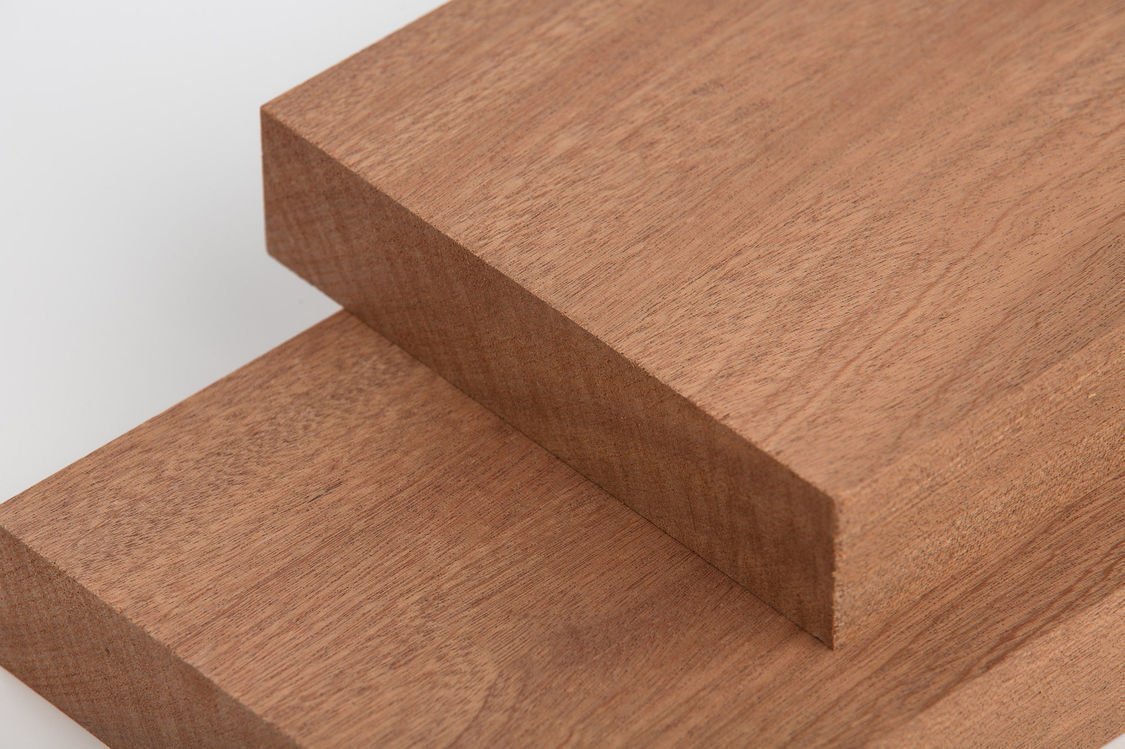
Sapele Woods (Nigeria), Aboudigro (Ivory Coast), Sapelli (Cameroons)
It is found in the rainforest of West Africa from the Ivory Coast through Ghana and from Nigeria to the Cameroons, and it extends eastwards to Uganda and Tanzania.
Avery large tree with cylindrical bole and small or no buttresses. Grows to a height of 45m or more, and a diameter at breast height of 1m or slightly more.
The sapwood is pale yellow or whitish, with the heartwood pinkish in colour, and when freshly cut, darkening to the typical mahogany colour of reddish brown. Sapelli is characterised by a marked and regular stripe, particularly pronounced on quarter sawn surfaces. Occasionally, a mottle figure is present. It is a fairly close texture, and the grain is interlocked. It is harder and heavier than African mahogany, weighing about 640 kg/m3 when dried. It has a pronounced cedar-like scent when freshly cut.
The timber dries rapidly with a marked tendency to distort. Quarter sawn material is less liable to degrade in drying.
Sapelli is much harder than African or American Mahogany and in resistance to indentation, bending strength, stiffness, and resistance to shock loads, is practically equal with English Oak.
Moderately durable.
Works fairly well with hand and machine tools, but the interlocked grain is often troublesome in planning and moulding, and a reduction of the cutting angle to 15 degrees is needed to obtain a good finish. It takes screws and nails well, glues satisfactorily, stains readily, and takes an excellent polish.
Constructional and decorative veneer, furniture, cabinet making, shop fitting, boat building, panelling, flooring, joinery.